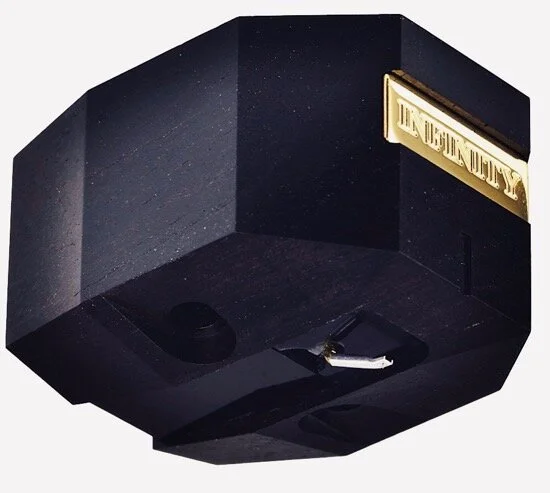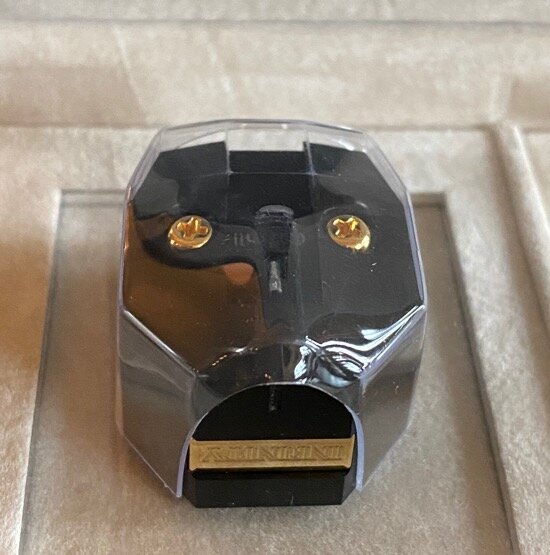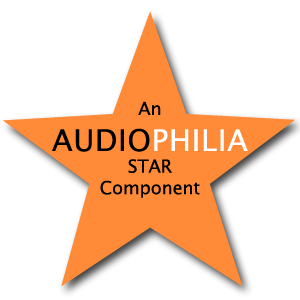Miyajima Laboratory Infinity Monaural Cartridge
Back in 2019, I was very fortunate to get a first look at an extensive record collection from the estate sale of a grand lady of the Canadian diplomatic corps. As the refined collection of classical LPs were primarily monophonic, purchase of 100 of them was the perfect catalyst to dip my toes into the fabulous world of monophony.
First up was the need for a monophonic cartridge. I played many of the LPs with my reference stereo cartridge, the Phasemation PP-2000 MC Phono Pickup Cartridge ($6000). It did a very good job, if hampered a little by the specific geometry and physics required by the mono record groove. A cartridge wired and setup correctly for monaural with a mono switch on the phono stage lowers the noise floor considerably. But, that’s just the beginning of why a mono-specific cartridge can be so important to the vinyl collector.
Research time.
Several audiophile friends here on the island pointed me in the right direction. A little internet surfing led me the same way—to Miyajima Laboratory of Fukuoka, Japan.
Head of Miyajima Labs is Noriyuki Miyajima.
Other fine manufacturers such as Denmark’s Ortofon were mentioned. I focused my energies on Miyajima and Ortofon. Both offer wonderful stereo cartridges, but also offer a range of specialized mono cartridges specific to the era I required.
The mono record was introduced in 1948. Playing LPs released in 1948 to the mid ‘60s, a cartridge with a conical stylus profile is best suited because of the groove geometry. There is much written on the subject at Miyajima’s and Ortofon’s websites specific to the type of cartridge required for your mono listening habits. ‘Modern’ mono LPs and reissues are pressed with a stereo lacquer and can play well on a stereo cartridge (for example)—much of the groove noise and crosstalk eliminated. Miyajima mono cartridges are true mono designs, playing vintage releases only in the vertical axis with zero compliance. This equals very low groove noise.
As my recently collected LPs are releases from the 1950s, it was suggested to me by Samuel Furon, Canadian distributor, Robin Wyatt, US wholesaler and by Miyajima-san, himself, the Infinity with a 1.0mm conical stylus would be best suited for the Audiophilia review. I’d like to thank all three gentlemen for their help in providing the appropriate Infinity for review.
The Infinity Monaural Cartridge is offered in two versions:
1.0mil conical stylus, suitable for wider groove mono records made from a stamper cut with a true mono cutting stylus (typically mono records made from the late 1947 to 1965).
0.7mil conical stylus, suitable for mono records made from a stamper cut with a stereo cutting stylus (generally mono records made from the late 1960s, including most modern mono reissues)
The MSRP for the Miyajima Infinity Monaural Cartridge in either version is $3375.
My use
The rarity of mono switches on today’s phono stages was going to be problematic. None of my (3) in house phono stages had one. Y connector time.
The luck of audiophiles! The day the Infinity arrived, the Icon Audio PS1 Mk. II All Valve Phono Stage was shipped, replete with mono toggle.
The freshly-built Infinity arrived from Japan in a solid, well padded case typical of those used for quality carts. The stylus was well protected with a hard plastic travel guard.
Setup was completed carefully with the dexterity of my wife’s delicate fingers. Unlike some of my serious audiophile friends, I only have one turntable. One of my friends has a Garrard for his stereo setup and a Thorens for the mono, along with vintage Leak amplifiers, a Quad preamp and TRIPLE stacked Quad ESL-57s!
The beautifully-built African Blackwood Miyajima Infinity Monaural Cartridge ($3375) on my reference Bergmann Magne Linear Tracking Tonearm & Bergmann Audio Magne Turntable ($13,500/arm incl.). African Blackwood is the same wood used to make clarinets and flutes (also known as Mpingo or Grenadilla). I’ve performed on these modern orchestral concert flutes and the sound is robust yet warm, seemingly perfect for high quality cartridges.
Specifications
Frequency response : 20Hz - 20KHz
Output level : 0.4mV
Impedance : 6 ohm
Recommended load : 100 ohm
Tracking force : 3.0 - 4.0g 3.5g recommended
Compliance 100Hz : 8×10-6cm/dyne
Weight : 14.8g
My use cont’d
The specs suggest a beast. The Magne arm can handle just about anything, so no problems with counterweights, tracking, etc. With the Infinity at 14.8g, my poor old Rega RB-2000 arm would have been having conniptions (it had a devil of a time with my 13g Phasemation PP-2000—I had to buy the extra heavy, tungsten counterweight and still had to null the VTF spring to make it work). Other than difficulties with delicate lead wires competing with inverting the cartridge/arm (and the arm’s equally delicate Litz wire) to attach minuscule nuts and washers, cartridge swapping was fairly straightforward and took about 30 minutes. As the loading on the Icon phono was hardwired at 100Ω, the Brit/Japan techno blend was a perfect match. With the help of the new Ortofon DS-3 Digital Scale and the easily manipulated Bergmann Magne counterweight, 3.5g recommended tracking weight was achieved easily.
It’s not the prettiest cartridge I’ve seen, but it exudes quality workmanship. All screws, nuts, washers, Allen key and paperwork are supplied.
Sound
Miyajima-san’s design acumen has been well documented and several colleagues told me tales of wonderful experiences they’ve had with his stereo and mono carts (we are requesting a stereo Destiny cart for future Audiophilia review).
As the Infinity was factory fresh, I unloaded its cantilever for 50 hours before sitting down for long sessions (at zero compliance, I’m not sure what was unloading). No matter, as you’ll be enjoying this specialized cartridge right out of the box, but a little time on the engine healed all audiophile wounds no matter how trivial. After a week, the sound was splendid—no imbalance, no frequency shouts.
The cartridge has a ‘completeness’, a musical solidity that’s somewhat difficult to put into words. You know when you get a new, unheard component and it fits into your system like a glove? What a great feeling. Be assured, if you set up the Infinity properly then play with clean records and a good phono stage, you’ll experience mono records in their purest sense. Specializing can be a good thing. In a perfect world, like my island pal Demetri, you’ll have two turntables, or, at least one that can accept two arms or an arm with a detachable head shell. Anything to split the love between your two carts. Easily.
If not, buy it anyway. This Miyajima is more than worth the trouble of swapping.
A little bit about the mono sound experience. Of course, that’s recording dependent, but a well recorded mono can sound immediate and emotionally gratifying with depth, width and imaging. Not aural trickery, just solid engineering much like an equally good stereo record.
My mono motherlode was filled with famously good recordings—the diplomat had exquisite taste in performing artists. Her nephew told me that she had a refined aesthetic in all things. This meant her ‘50’s collection included Annie Fischer, Edwin Fischer, Wilhelm Backhaus and Walter Gieseking, pianists, violinists Yehudi Menuhin and Jascha Heifetz, and singers such as Elisabeth Schwarzkopf. Many of the recordings are conducted by legends such Wilhelm Furtwängler, Bruno Walter, Erich Kleiber and others.
The difference between the performance of my stereo cartridge and demonstrated by the Miyajima was never more instructive when listening to Walter Gieseking, the French-born, German pianist playing Debussy Preludes, Book 1. I loved this record on my stereo setup, but in original mono, the sound was revelatory. I was told by many how much improved the sound would be but was shocked at the difference.
The Gieseking quality and touch in stereo was there, but the mono setup revealed subtleties obscured by the stereo cart slipping and sliding in the unsympathetic vintage mono groove. Sparkle, life and a spectacular soundstage were the differences with corrected geometry. I bet my purchases had only a few plays on them. As such, the surfaces were eerily silent and combined with correct stylus profile, the noise floor was lowered considerably. I wonder what Gieseking would have thought at this level of vinyl playback?
Solo records and chamber music fared best, but even large scale orchestral recordings sounded very fine. With large numbers of musicians, recordings are more challenging, more so with only one channel. The recording engineers and producers for HMV, Decca and others had their listening ears on, at least on the records I purchased. True, Koussevitzky and Toscanini rarely received recordings with bloom and great timbral beauty, but the emotion conveyed and the virtuosity of their esteemed ensembles are heard dramatically. Interestingly, Furtwängler’s HMV engineers manage considerable dimensionality on his Vienna Phil/Beethoven/Symphony recordings. The impact of the rushing cellos and basses in the 5th’s ‘Scherzo’ just one of many aural surprises gifted by the Infinity.
Most large-scale orchestral/Karajan/Columbia with the Philharmonia sounded wonderful. But Mengelberg records with the Concertgebouw, at least those in my collection, were boxy and dull. As such, the Infinity cartridge is a truth teller. Don’t expect a butterfly from an unresponsive cocoon. But, after not digging a few Erich Kleiber LPs, I threw on a very early RCA Shaded Dog mono, Fiedler’s Gaîté Parisienne, followed by two of Clemens Krauss’ Decca/Vienna New Year Concerts. All three are magnificent. Power, dynamics, and beautiful timbres. Balance and musicality restored. With remarkable bass.
The biggest surprise came from a live recording—Belafonte at Carnegie Hall. The stereo vinyl is widely available and can sound wonderful. This early mono pressing was superb—refined, smooth, detailed with incredible presence. Belafonte’s passion for world music and his musicians’ relaying of it was instantaneous. I have this recording on CD, SACD, FLAC file, original stereo vinyl pressing and vinyl reissue. The mono via the Infinity is now my favourite. The double mono album cost me $2.00.
Conclusion
I’m a convert and now a bigger fan of mono. I’m looking for a second turntable suitable for my monophonic needs. I was told by friends and colleagues how much enjoyment I would get from the new collection. How right they were.
Hey, I love stereo sound. I love my stereo cartridge. Both, still supersede my mono admiration and if pushed to have only one playback, it’d be stereo. But Miyajima-san has made that a bit of a moot audiophile point. As I wrote, even if you have to physically swap each time, the Infinity is more than worth the MSRP of $3375. In fact, while still relatively expensive, in sound quality terms, it’s a steal.
If you’re the type of vinyl audiophile who wants to elevate your playback and collection to the next level, give you a glimpse into times past in the most musical and dynamic way with no compromises, the Infinity Monaural Cartridge is your ticket. Very highly recommended.
Further information: Miyajima Laboratory






